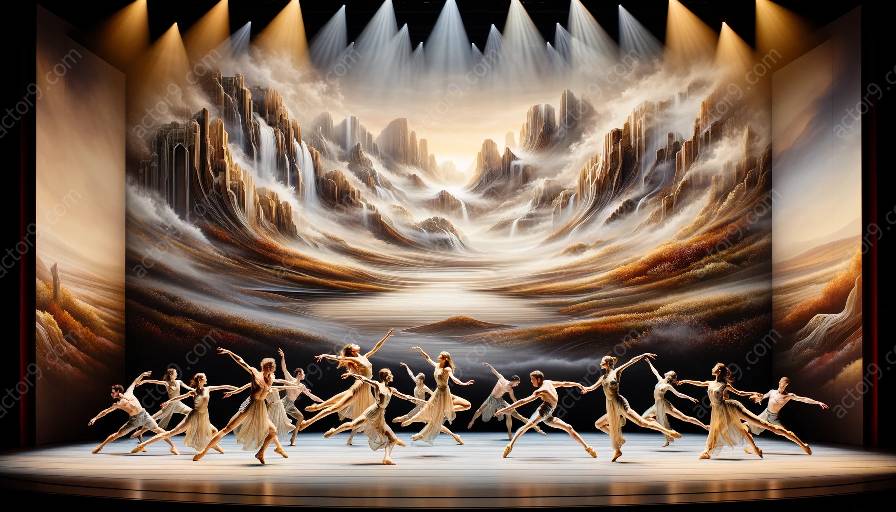Physical theatre choreography, also known as movement-based theatre, is a unique form of performance that integrates storytelling, expressive movement, and visual spectacle to captivate audiences. This topic cluster delves into the intricate art of physical theatre choreography and its intersections with other performing arts, providing a comprehensive exploration of the creative processes, techniques, and influences that shape this dynamic discipline.
The Art of Physical Theatre Choreography
Physical theatre choreography is a multifaceted art form that incorporates elements of dance, mime, acrobatics, and dramatic movement to convey narrative and emotional depth. It emphasizes the use of the body as the primary instrument of storytelling, employing intricate movement sequences, gestures, and physical expressions to communicate themes, characters, and dramatic arcs. The choreography in physical theatre is often devised collaboratively by performers, directors, and choreographers, using improvisation and creative exploration to develop unique movement vocabularies and visual compositions.
Expressive Movement and Emotional Storytelling
One of the central tenets of physical theatre choreography is its ability to convey profound emotions and narratives through non-verbal means. Performers use their bodies as expressive tools to communicate a wide range of emotions, from joy and passion to sorrow and despair, creating visceral connections with audiences. Through carefully crafted movement sequences and physical interactions, physical theatre choreography transcends linguistic barriers, inviting viewers into immersive, sensorial experiences that evoke powerful emotional responses.
Visual Spectacle and Theatrical Innovation
Physical theatre choreography is also celebrated for its transformative visual and theatrical impact. By integrating movement, music, lighting, and set design, physical theatre productions create compelling visual spectacles that transport audiences into fantastical realms and thought-provoking environments. The choreography serves as a pivotal element in shaping the overall aesthetic and kinetic dynamics of the performance, enhancing the dramatic narrative and immersive qualities of the production.
Intersections with Other Performing Arts
Physical theatre choreography intersects with various other performing arts, enriching and evolving its creative possibilities. It often integrates elements of traditional and contemporary dance, bolstered by the principles of choreography, rhythm, and spatial dynamics. Additionally, physical theatre choreography intersects with disciplines such as circus arts, puppetry, and mask performance, embracing a diverse range of storytelling techniques and physical vocabularies to expand its artistic horizons.
Collaborative Techniques and Cross-Disciplinary Influences
The collaborative nature of physical theatre choreography encourages cross-disciplinary influences and techniques, fostering dynamic partnerships between choreographers, composers, visual artists, and technologists. This interdisciplinary approach allows for the seamless integration of music, soundscapes, multimedia, and interactive technologies, enhancing the theatrical experience and pushing the boundaries of traditional performance conventions.
Adaptation in Contemporary Contexts
Physical theatre choreography continues to adapt and thrive in contemporary contexts, responding to the evolving landscape of performing arts and societal dynamics. It intertwines with contemporary performance genres, such as immersive theatre, site-specific performance, and digital performance, embracing innovative methodologies and technological advancements to engage with contemporary audiences and address pertinent social and cultural themes.
Conclusion
Physical theatre choreography represents a powerful nexus of artistic expression, storytelling, and emotive communication. Its intersections with other performing arts exemplify a fusion of creativity, collaboration, and innovation, shaping the evolution of contemporary performance practices. Through its expressive movement, visual spectacle, and cross-disciplinary influences, physical theatre choreography continues to redefine the boundaries of performance, offering captivating narratives and transformative experiences for audiences worldwide.




































